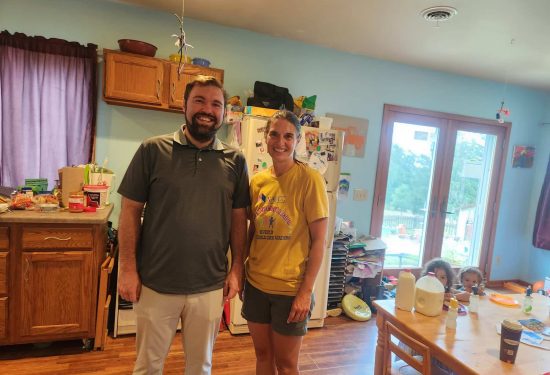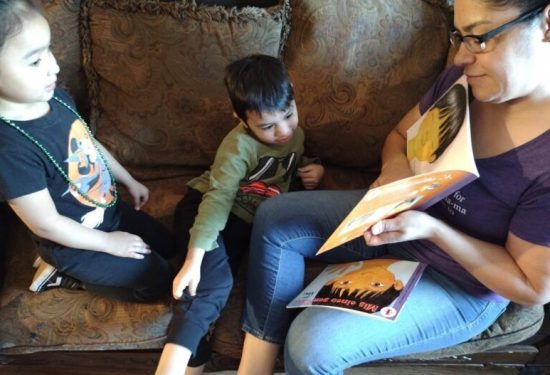The winter solstice marks the moment when the days lengthen and the light returns. Our winter holidays similarly remind us to “lighten up,” be hopeful and open our hearts to the most vulnerable in our communities, including children and families struggling to make ends meet. In this season of giving, please join us in asking policymakers to support legislation that provides kids and caregivers with gifts that keep on giving throughout the year. Here are the top five things on Home Grown’s holiday wish list.
- Boost public investment in child care to make it affordable and accessible for all families.
It may seem crass to say, “Just send money,” but a strong investment in the Child Care Development Block Grant that funds subsidies for millions of families is what’s needed to balance the household budget for care that enables parents of young children to work. Following the expiration of American Rescue Plan stabilization funds this fall, home-based providers across the country have had to raise their fees, often passing these increases along to families. Regina-Sanna Wilhite, a licensed provider in Texas, told us she’s recently had to raise her rates in order to cover inflation costs and make up for the shortfall in funding. “Families are really hurting,” she says. “It puts a family with multiple kids in a real bind. Does [mom] quit her job or cut back on food or other essentials? Somebody has to inject some funds into the system so that it doesn’t all fall on that mom’s shoulders.”
Many families seek home-based care because they work non-traditional hours when most child care centers are not open. Racquel Hayes McKay, a registered family child care provider in New Orleans, specializes in night and weekend child care for flight attendants, hospital workers, military personnel and hospitality workers. “The child care landscape for folks who work nights and weekends has changed for this generation. It used to be people left their kids with grandma. But now grandmothers are often still working. Or they live in a different city or state. So these families need people like me who can take care of their children while they work essential jobs.”
We urge Congress to invest now in the Child Care Development Block Grant that supports home-based child care providers, as well as center-based care. Sixteen billion dollars in additional child care funding would help ensure more families can find affordable care for their children while they work.
- Give home-based child care providers fair and adequate compensation and access to benefits.
Increasing the CCDBG would also sustain child care providers, who are shockingly undercompensated (or uncompensated) for the complex work of educating and nurturing little humans. Shalicia Jackson, a five-star, licensed family child care provider with a master’s degree in Winston-Salem, North Carolina, calculates that after expenses, she earns only $14 an hour! Jackson’s income is typical of family child care providers, who operate their businesses on a razor-thin profit margin.
Erika Sanchez, a New Jersey provider explains that this level of compensation often means caregivers can’t afford a mortgage, much less afford health insurance or a few dollars out of every paycheck to start a retirement account. These are benefits that full-time workers in other fields take for granted, and they shouldn’t be luxuries for child care workers. “We deserve professional wages and the same benefits as other workers,” says Sanchez. “Families depend on us, and we can’t keep our doors open on what we’re currently able to put in the bank.”
Public funding that stabilizes providers’ economic well-being, ensures they earn family-sustaining wages and provides access to health insurance, benefits, secure housing and retirement savings is a critical step toward strengthening America’s economic well-being.
- Eliminate the harmful two-tier system for family child care in CACFP.
The Child and Adult Care Food Program (CACFP) includes a harmful two-tier system that reimburses some family child care providers about half as much as other family child care providers. This system squeezes thousands of providers out of the program because second-tier providers don’t receive enough reimbursement to support the costs of feeding the children in their care.
We urge Congress to pass the Child Care Nutrition Enhancement Act, already introduced in both the House and the Senate, which would eliminate the discriminatory tiering system, increase the base payment rates by 10 cents per meal and snack, and also ensure that a family child care provider could be reimbursed for their own child’s meals and snacks if the child is in their program.
- Expand CACFP by reimbursing caregivers for an extra meal.
Studies show that one out of three child care providers are food insecure. The CACFP reimburses eligible caregivers for part of the cost of meals they prepare for the children in their care, but it assumes that providers feed children just two meals a day. In fact, many providers care for children for as many as 12 hours a day, serving them breakfast, lunch, and dinner, plus snacks.
The recently introduced bipartisan Early Childhood Nutrition Improvement Act, makes an additional meal eligible for reimbursement by CACFP and simplifies the reporting process for child care providers so that more are likely to apply.
We urge Congress to pass the Early Childhood Nutrition Improvement Act so that providers don’t have to skimp on meals and children in their care are assured healthy and sustaining meals throughout the day. The twin legislative fixes to CACFP will put food on the table for children in home-based child care settings and money in the pocketbooks of the providers who pay for those meals.
- Listen to family and provider voices and include them in decisions.
The nature of child care work—often 365 days a year, 10 hours a day, meeting the minute-to-minute demands of babies and toddlers—makes it especially challenging for caregivers to engage meaningfully in policy conversations about child care regulation, compensation and contribution. Yet understanding the nature of child care work, as well as the costs and benefits of child care from the perspective of caregivers themselves, is a critical step toward addressing the needs of child care workers, the families they serve and America’s workforce.
In 2023, we continued to prioritize listening to and documenting the stories of home-based child care providers across the nation. More than anything else, providers tell us, “We want to be heard, seen, and valued.” Dozens of home-based providers serve on Home Grown’s workgroups and advisories, including our Provider Advisory Group, Policy Work Group, Licensing Workgroup and Provider Insights Panel. Multiple Home Grown initiatives are built around provider leadership and voice, including Leading from Home and our Voices from Home collective, which is shifting the narrative around supporting family, friend, and neighbor (FFN) caregivers.
Many of the more than 2,000 child care providers in our network also lead local and regional comprehensive networks, empowering and advocating for other home-based caregivers in their communities.
Mary Beth Testa, a policy consultant working with and for home-based child care providers, partners and allies, says, “When policymakers in Washington D.C. hear directly from child care providers—about their working conditions, needs and ideas for fixing the child care crisis—it has a huge impact. They can’t ignore this foundational sector of America’s economy when they see the real people behind the policy change we seek.”
Kayanna Jackson, a member of the Policy Work Group and representative of the New Jersey Family Child Care Providers Association notes that changing legislators’ hearts and minds begins with education. “When governors and policymakers understand the day-to-day struggles of families and child care providers, they will want better for kids: their own and the children in their district. If they know better, they will do better!”
Amplifying and listening to the voices of families and providers—the key players in the child care sector—is essential. Providers and families must be included in the visioning and solution-building for child care systems and policy at local and national levels so that together we create a child care system that works for everyone.
Don’t Wait ‘Till the Last Minute: Take Action to Support Kids and Caregivers Now
With just a few days left in the legislative shopping season, we urge Congress to act now to fulfill this wish list. Invest generously in the CCDBG to make child care accessible and affordable for families and sustainable for child care providers. Pass the Early Childhood Nutrition Improvement Act and the Childhood Nutrition Enhancement Act. Value the voices of child care providers. These five gifts would usher in a truly auspicious new year for America’s families and the nation’s economy.




